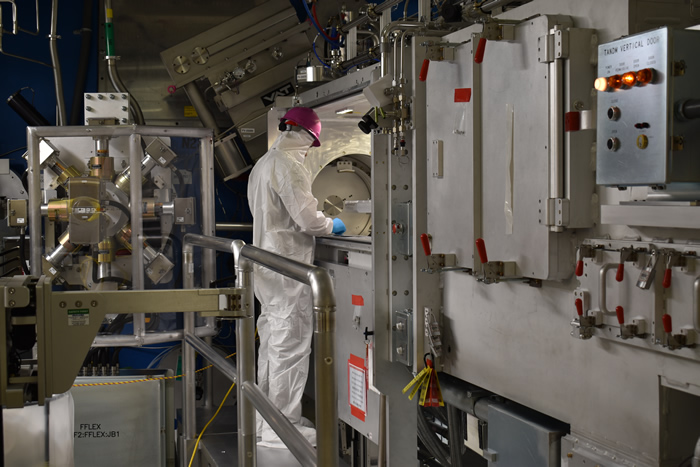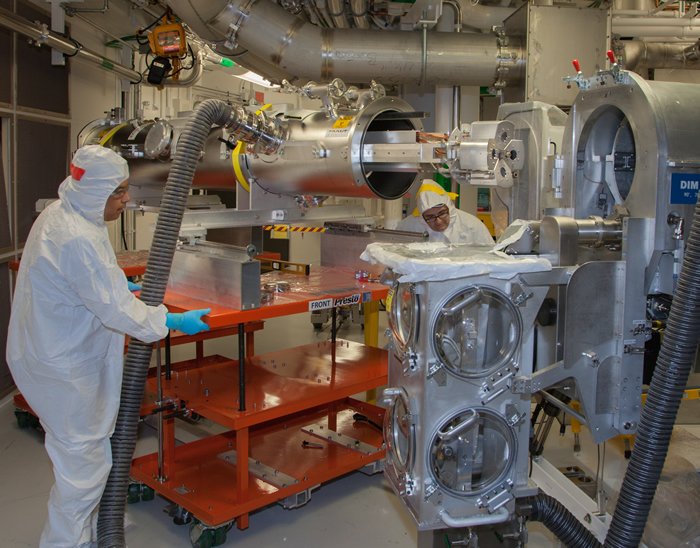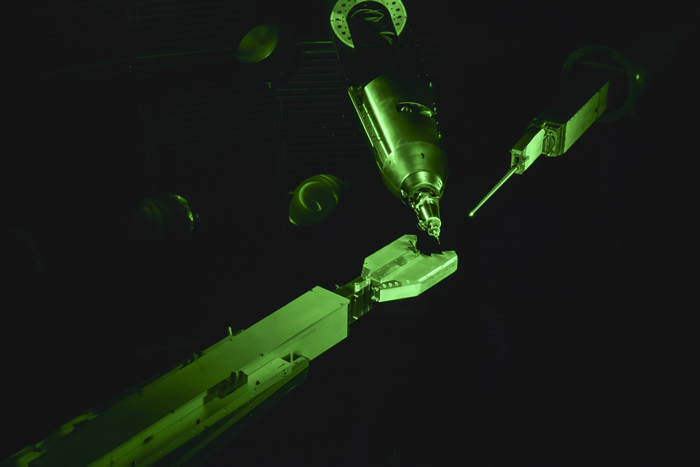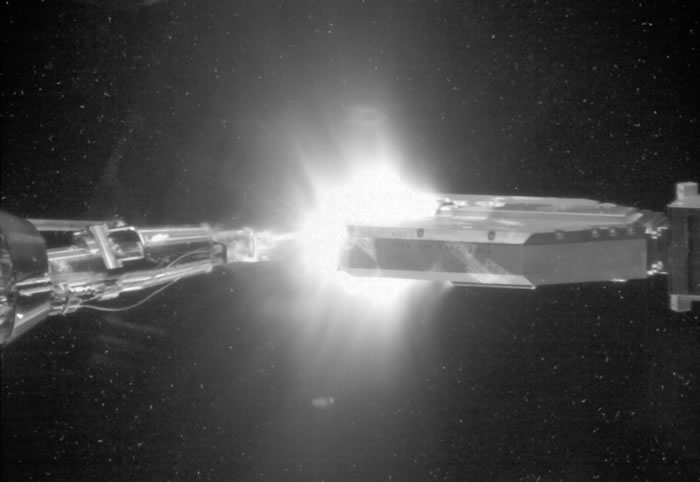National Security Applications

Measuring Radiation Effects
An important element of the Stockpile Stewardship Program is guaranteeing nuclear weapons’ survivability—their ability to function—under hostile conditions such as those that could result from a pre-emptive strike by an adversary, or when a conventional war may be fought in a nuclear environment.
In the absence of nuclear testing, high energy density research facilities like NIF are a key tool for testing the survivability of nuclear weapon components.
NIF’s National Security Applications (NSA) program allows researchers to subject nonnuclear weapon system parts, such as electronics and other materials, to intense radiation and to probe material properties at extreme pressures and temperatures—conditions that mimic what systems may face in a real-world nuclear environment.
In the NSA program, researchers for the Department of Defense and other government agencies use NIF to provide hostile x-ray, neutron, and electromagnetic pulse environments for vulnerability and hardness testing. This helps researchers evaluate how well U.S. weapons will survive and function as expected after traversing evolving adversary missile defenses. Without the ability to survive, these weapons would be unable to hold targets at risk, rendering the deterrent ineffective.
 A technician loads NSA diagnostics and samples into a NIF target and diagnostic manipulator (TANDM). Credit: Brent Blue
A technician loads NSA diagnostics and samples into a NIF target and diagnostic manipulator (TANDM). Credit: Brent Blue NIF performs an average of 40 to 50 NSA shots a year. Lawrence Livermore, Sandia, and Los Alamos national laboratories lead some of these experiments, as do partners from the Naval Research Laboratory and other agencies as far away as the United Kingdom.
An important subset of experiments investigates the survivability of components during nuclear detonations. NIF can precisely replicate and control different types of radiation bombardment, allowing researchers to understand how the materials that make up these components will respond.
For other NIF missions, laser and target interactions during a shot generate conditions, such as plasma and fusion, that are the objects of study. For NSA shots, those interactions produce a bright (powerful) radiation source used to examine samples physically separated from the laser and target. In fact, many NSA shots don’t use a hohlraum or a fuel capsule.
The samples, which can be 50 millimeters in diameter, remain solid during a shot and never become plasma. While other NIF missions center on 20-nanonsecond bursts of laser energy, the period of interest for NSA shots leans toward microseconds—which could be a sample’s material response time—and could extend to minutes, days, months, or even longer.
 NSA experiments help validate simulation codes designed to determine the effects of system-generated electromagnetic pulses (SGEMP) on various materials. Here NIF target area operators load the SGEMP four-cassette diagnostic in a diagnostic instrument manipulator. The experiments, led by Sandia National Laboratories and the UK’s Atomic Weapons establishment, use the powerful x-ray pulse generated in a custom-designed x-ray source target to create EMP effects in test objects.
NSA experiments help validate simulation codes designed to determine the effects of system-generated electromagnetic pulses (SGEMP) on various materials. Here NIF target area operators load the SGEMP four-cassette diagnostic in a diagnostic instrument manipulator. The experiments, led by Sandia National Laboratories and the UK’s Atomic Weapons establishment, use the powerful x-ray pulse generated in a custom-designed x-ray source target to create EMP effects in test objects. By changing the distance between the target and the samples, the NSA team can match the amount of x-ray energy researchers require. Diagnostics that hold samples can be positioned a few centimeters from the target for a very high dose or more than a meter away for a lower dose.
“Hefty doses of x rays smack the samples very hard and launch shockwaves through them. Interesting physics happens.”
—National Security Applications Program Manager Brent Blue
When NIF’s laser energy is applied, the immense heat causes the target to emit x rays that are unique to the target’s material. If x rays with different characteristics are needed, the material is changed. At about a gram or less, some targets are solids while some are gases.
NIF has fielded radiation-effects targets made of low-density silver foams, not much denser than air. Instead of the laser stopping at the surface as with a solid wall, it can propagate through the foam, allowing uniform heating across its volume.
NIF can also generate and tune bright sources of neutrons at 14 million electron volts (MeV). Neutrons will pass through a sample, but still interact with the material. Neutron and electromagnetic pulse experiments also investigate damage effects on electronics. A single neutron passing through a transistor is enough to change its performance.
 (Above) Positioned inside the Target Chamber are the snout on TANDM (bottom), the target positioner (top left), and a time resolved x-ray spectrometer (top right). (Below) When struck by the laser, a target filled with xenon gas emits x rays at 4.5 keV.
(Above) Positioned inside the Target Chamber are the snout on TANDM (bottom), the target positioner (top left), and a time resolved x-ray spectrometer (top right). (Below) When struck by the laser, a target filled with xenon gas emits x rays at 4.5 keV.
These shots leverage targets from the inertial confinement fusion program. NSA shots have used cryogenic, indirectly driven capsules inside hohlraums to generate neutrons but also have used direct-drive capsules, which are directly impacted by the lasers.
Another advantage of NIF is that shots generate very little debris. This is especially important for experiments using x rays to investigate how shocks are transmitted through a sample. The x rays from the target, followed by target debris, will hit the sample. Too much debris could obscure the signal from the x rays.
More Information
“STAR Array Tests Materials’ Response to Strong X-ray Shocks,” NIF & Photon Science News, December 17, 2019
“Energetic Laser Helps Test Weapon Survivability,” Science & Technology Review, May, 2019
“Firing up NIF for National Security Applications,” NIF & Photon Science News, March, 2018
“Testing Neutron Effects on Electronics,” NIF & Photon Science News, April, 2016
“NIF Experiments Help Validate Electromagnetic Pulse Codes,” NIF & Photon Science News, January, 2015
“NIF Experiments Track Weapons Effects to Improve Nuclear Forensics,” Science & Technology Review, September, 2013



